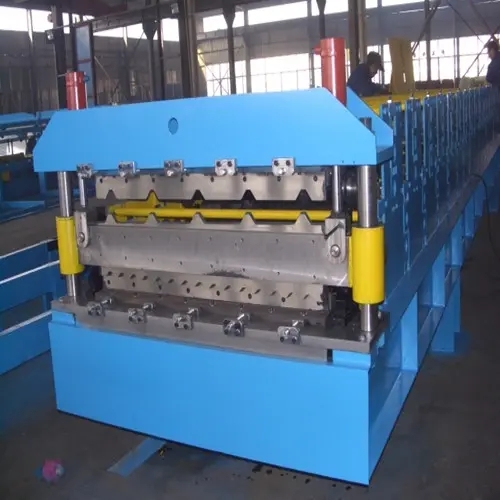
The Benefits and Functionality of W Beam Guardrail Cold Bending Machines
In an era where road safety is of paramount importance, the infrastructure that supports it plays a critical role. One such innovation is the W Beam guardrail, designed to enhance the safety of vehicles on highways and roads. The manufacturing process of W Beam guardrails has evolved significantly, and one of the pivotal machines that facilitate this advancement is the cold bending machine. This article explores the functionality and benefits of W Beam guardrail cold bending machines in modern infrastructure.
What is a W Beam Guardrail?
W Beam guardrails are roadside safety barriers formed from steel that has been shaped into a W structure. They serve to redirect vehicles that veer off the road back into the driving lane and prevent collisions with obstacles near the road. Their design and construction materials help absorb the impact of collisions, thereby reducing the severity of accidents and protecting both the occupants of the vehicles and pedestrians.
The Importance of Cold Bending in Manufacturing
Cold bending is a process in which metal is shaped at or near room temperature without the application of heat. This method has several advantages over traditional hot bending processes, including less material distortion, better surface finish, and the preservation of the metal's physical properties. In the manufacturing of guardrails, cold bending machines are utilized to create precise curves and angles that are essential for the effective performance of the guardrails.
Functionality of Cold Bending Machines for W Beam Guardrails
A W Beam guardrail cold bending machine is specifically designed to handle the cold bending process for guardrail production. These machines are equipped with advanced technology that allows for efficient and precise bending of metal sheets. Here’s how they work
1. Material Loading Steel sheets are fed into the machine, ready to be formed into W Beam guardrails.
2. Bending Process Using a set of rollers and molds, the machine bends the steel into the desired W shape. This is done through a series of controlled movements that ensure exact shaping and consistency throughout the production run.

3. Quality Control During operation, many machines are equipped with sensors and monitoring systems that check the dimensions and angles of the bent guardrails. This ensures that they meet safety standards and specifications required for road usage.
Advantages of Using Cold Bending Machines
1. Cost-Effectiveness Cold bending machines can significantly lower production costs. The reduced energy consumption compared to hot bending processes translates into decreased operational expenses.
2. Higher Precision The precision offered by cold bending is crucial for safety in road applications. Well-formed guardrails align accurately, maximizing their effectiveness during vehicular impacts.
3. Material Integrity Cold bending protects the structural integrity of the steel, minimizing the risk of weakening due to excessive heat. This results in stronger, longer-lasting guardrails.
4. Flexibility in Design Modern cold bending machines provide manufacturers with the flexibility to create custom designs that meet specific safety regulations or customer requirements.
5. Reduced Lead Time With the improved efficiency offered by these machines, manufacturers can achieve faster production times, thereby shortening lead times for delivery to installation sites.
Conclusion
The role of W Beam guardrail cold bending machines in enhancing road safety cannot be overstated. These machines not only streamline the manufacturing process but also ensure that the final products meet the rigorous demands for quality and performance in road infrastructure. As road safety continues to gain importance globally, the technology behind guardrail production, particularly through the use of cold bending techniques, will undeniably play a significant role in minimizing road accidents and saving lives. Embracing this technology will not only improve safety standards but will also enhance the overall reliability of road infrastructures for years to come.